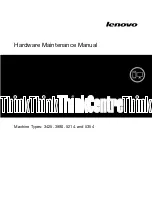
Chapter 5
Calculating Rotational Speed
©
National Instruments Corporation
5-3
LabVIEW Order Analysis Toolset User Manual
of an equally spaced sequence requires fewer computations than
calculating the first derivative of an unequally spaced sequence.
For the evenly separated function series
t
k
, you can use a digital
differentiator to calculate the first derivative. The digital differentiator
is implemented as a special FIR filter with the following equation.
(5-1)
where
h
i
represents the differentiator coefficients.
Rotational speed at each pulse-arrival time instant then is calculated by the
following equation.
The differentiator in Equation 5-1 has an order of 2M. As the order
becomes larger, the accuracy of the calculated rotational speed improves.
However, as the order becomes larger, the number of pulses needed to
calculate the rotational speed also increases. The LabVIEW Order Analysis
Toolset can automatically adjust the order of the differentiator according to
the number of pulses in the buffer. Automatically adjusting the order of the
differentiator improves the accuracy of the calculated rotational speed
when the buffer contains a large number of pulses and makes it possible
to generate a result even if the buffer contains only two pulses.
Averaging Pulses
Sometimes, the calculated rotational speed is noisy because of error in
measuring the arrival time of each pulse. Averaging pulses can smooth
noisy calculated rotational speed results. One of the averaging approaches
considers two or more pulses as a single pulse by decimating the original
t
k
series. Also, the angle increment between two sequential pulses must be
multiplied by the corresponding factor. Because the measurement error
of the pulse arrival time is noncumulative, widening the pulse interval
decreases the relative error.
dt
d
θ
------
θ θ
k
=
1
∆θ
-------
h
i
t
k i
–
,
i
M
–
=
M
∑
≈
ω
t
k
( )
d
θ
dt
------
t
t
k
=
1
dt
d
θ
------
θ θ
k
=
--------------------
=
=















































